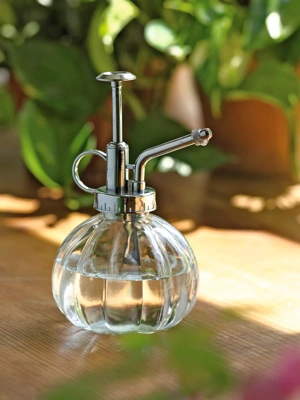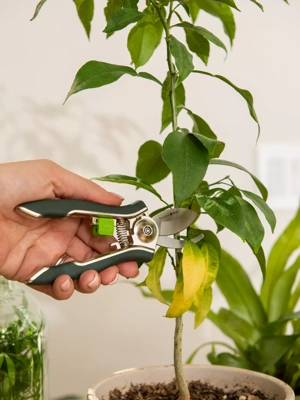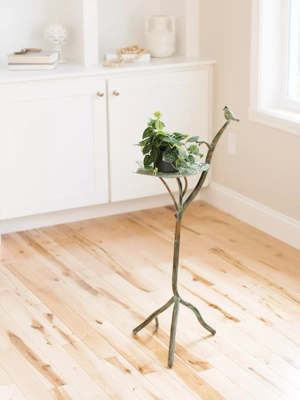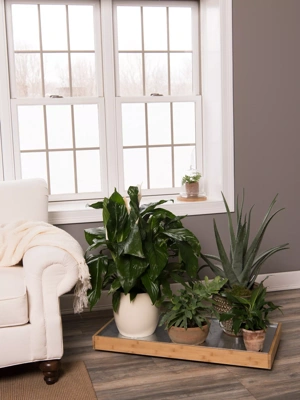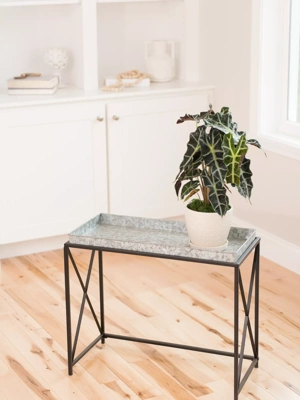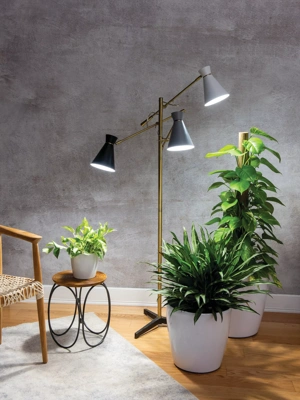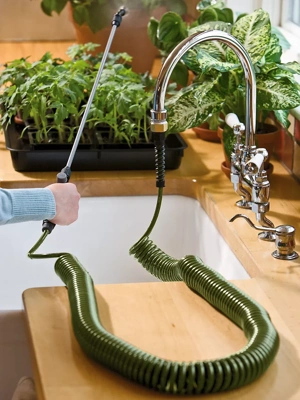How To Grow & Care For Fiddle Leaf Figs
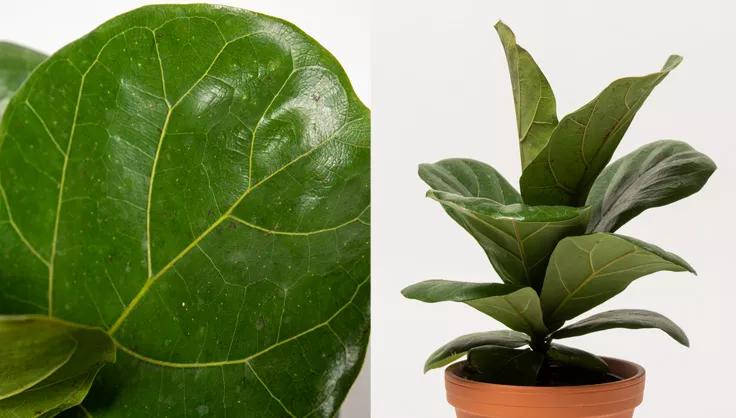
Popular Types/Cultivars of Fiddle Leaf Figs
The most common variety is the standard Ficus lyrata with its iconic broad leaves. In its native range, F. lyrata can grow as a tree, 20-30 feet in height! As houseplants, they are much smaller, usually 6-8 feet in maximum height. For those looking for something different, F. lyrata 'Variegata’ boasts lush green leaves with pale yellow edges, and F. lyrata ‘Bambino’ is a dwarf version, perfect for smaller spaces, as it usually tops out at 3-5 feet in height.
Best Growing Conditions For Fiddle Leaf Figs
Light: Fiddle Leaf Figs love bright, indirect light. A bright room where the plant is exposed to several hours of sunlight for most of the day is ideal. Note that Fiddle Leaf Figs are sensitive to chilly drafts and will drop leaves suddenly if hit with cold temps — keep your plant away from outer doors or drafty windows.
Soil: Despite being picky about temperature and humidity, Fiddle Leaf Figs are less particular about their soil — a standard houseplant soil mixed with some perlite for added drainage should do just fine.
Humidity: Standard room humidity should suffice, but as a tropical native, Fiddle Leaf Figs will benefit from a little extra humidity. Consider placing your plant in a steamy bathroom or using a humidifier.
Let Gardener's Supply Co. employee-owner and houseplant expert, Ellen, guide you through some basic Fiddle Leaf Fig care:
How To Care For Fiddle Leaf Figs
Fertilizing
During the growing season (spring and summer), feed your Fiddle Leaf Fig with a diluted, balanced, 10-10-10 fertilizer once a month.
Watering
Water only when the top inch of the soil is dry. Fiddle Leaf Figs appreciate humid air, but do not do well when sitting in consistently wet soil.
Pruning
Pruning helps to shape the plant and encourage growth, and Fiddle Leaf Figs respond well to a periodic trim. For a bushier, shorter plant, cut off the top of the main stem at the desired height and new growth will develop from that point. If you’re going for a tall, treelike vibe, allow the plant to grow tall and then remove the lower leaves and branches to reveal the woody trunk.
Repotting
Repot your Fiddle Leaf Fig every couple of years or when it becomes root bound. Choose a pot that’s slightly larger than the current one and has good drainage.
Propagating
Propagation can be done by leaf or stem cuttings. Using a clean knife, cut a healthy stem between two leaf nodes, making sure that your cutting is at least 3-4 inches long. Remove any bark or leaves that will be below the water line and place the cutting in water until roots form. Transplant the new cutting into soil as soon as you see a healthy web of roots form.
Common Problems with Fiddle Leaf Figs
Frequent Pests
Fiddle-leaf figs are susceptible to number of plant pests, especially spider mites and scale insects. Check the leaves often, and if your plant becomes infested, gently wash the leaves with a damp cloth and treat with neem oil or another organic pesticide.
Signs of Stress
Fiddle Leaf Figs are quick to show that they’re unhappy with their growing conditions:
Yellowing leaves: This is usually a sign of overwatering. Water your plant deeply, but less frequently — the top inch of potting mix should dry out between waterings.
Leaf tips turn brown: Low humidity or an underwatered plant. Move your plant to a more humid room (i.e. bathroom) or try to mist it frequently. Dry winter air can be especially drying for Fiddle Leaf Figs.
Toxicity
Fiddle Leaf Figs are toxic to cats and dogs if ingested. It’s best to keep them out of reach of your furry friends.
Fiddle Leaf Figs FAQs
Q: Does a Fiddle Leaf Fig produce fruit?
A: A Fiddle Leaf Fig can produce fruit in its native habitat but will rarely do so when grown as a houseplant. This plant is all about the foliage!
Q: Why is my Fiddle Leaf Fig leaning to one side?
A: Many plants and seedlings will stretch towards the light if they are not receiving enough light. Don’t make your plant work so hard! Move your Fiddle Leaf to a brighter room or consider adding a full-spectrum grow light
Q: Why did my Fiddle Leaf Fig suddenly drop leaves?
A: Fiddle Leaf Figs are sensitive to sudden shifts in their growing environment and will lose their leaves if in shock. Maintain a consistent room temperature (65-80 degrees Fahrenheit is suitable) and keep your plant away from drafty doors or windows.
Although not as carefree as a snake plant or spider plant, Fiddle Leaf Figs will truly thrive once their native growing conditions are understood. With the right conditions and a bit of attention, these stunning plants can be a lush, leafy part of your space for many years.
Last updated: 05/09/2024
Print this Article:
Related items
Get the Dirt
Stay up to date on new articles and advice. Please fill out the information below.

